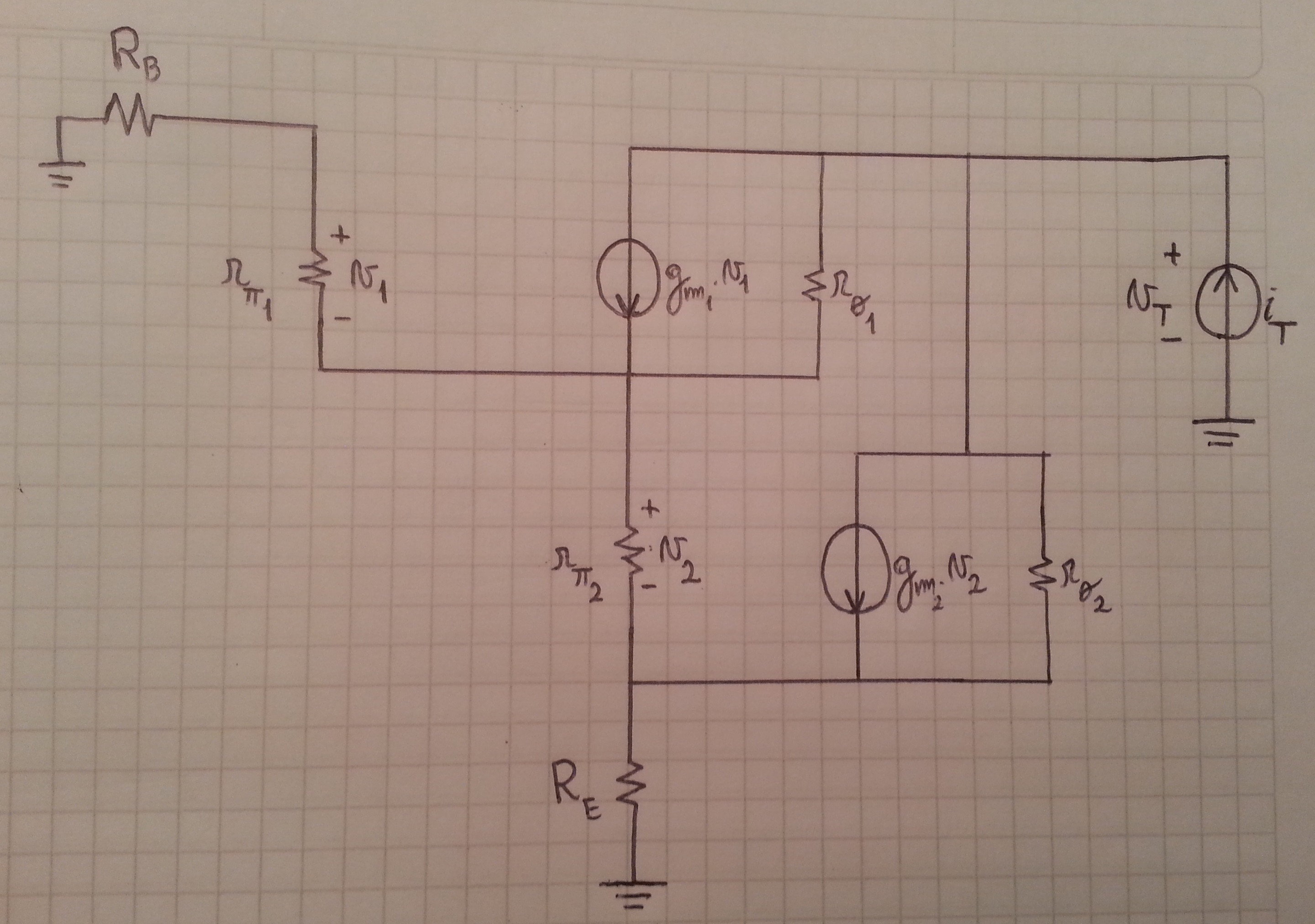You can solve this problem many ways. This is just the way that I would approach it.
First, label each node with its own name. I will just give you a couple equations, you can find the others. For this, assume the node which V1 and V2 meet at is called Va.
$$
v_a = V_{R_E}+v_2
$$
$$
v_1 = V_{R_B} - v_a
$$
$$
v_2 = v_a - v_{R_E}
$$
Inject a current i_t into the output node, as you have drawn. This injected current will be equal to the current in each branch (through gm1*v1, Ro1, gm2*v2, and ro2).
$$
i_t = g_{m1}*v_1 + (v_t-v_a)/R_{0_1} + g_{m2}*v_2 + (v_t-V_{R_E})/R_{0_2}
$$
Now you have 4 nodes which you can write the sum of currents equations for. This sets the minimum number of equations you will need to compile before you can solve for any variable. There are many equations you can write to solve this, the idea is that you need to relate these variables together. Mesh currents is just a method that will always help you solve the problem using small signal. Another is node voltages. Personally for me it makes more sense to do the sum of currents at each node (node voltage style), rather than the mesh current method.
I would write the sum of currents at each node (like I did for the output node) and eliminate variables. First eliminate either v1, v2 or va, vb (whichever seems more intuitive for you; I prefer solving node voltages with reference to ground); since those are redundant.

